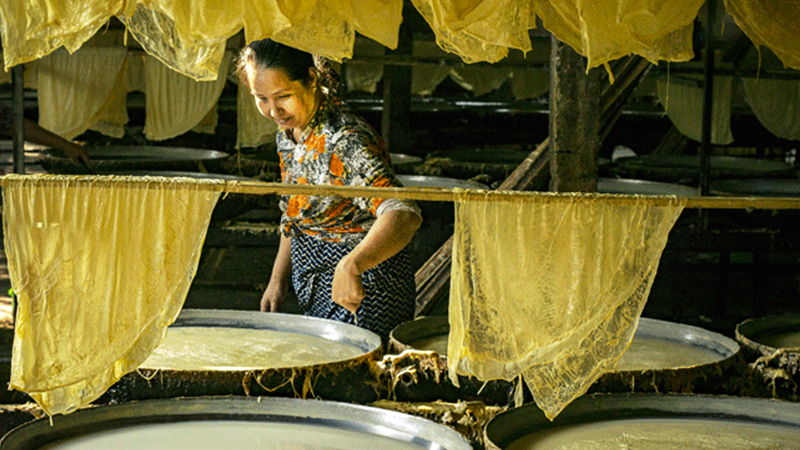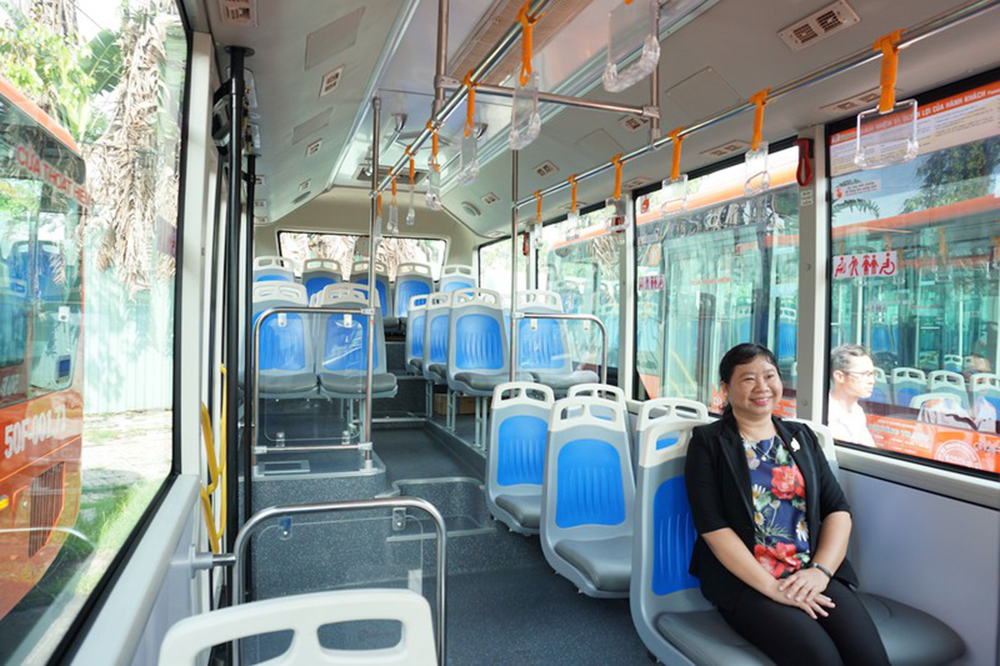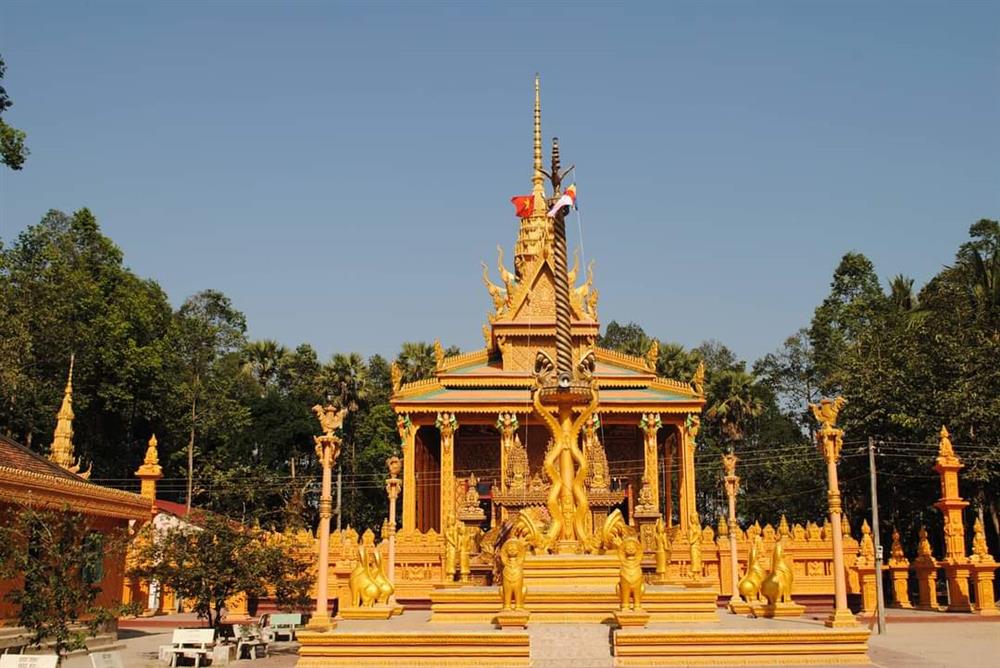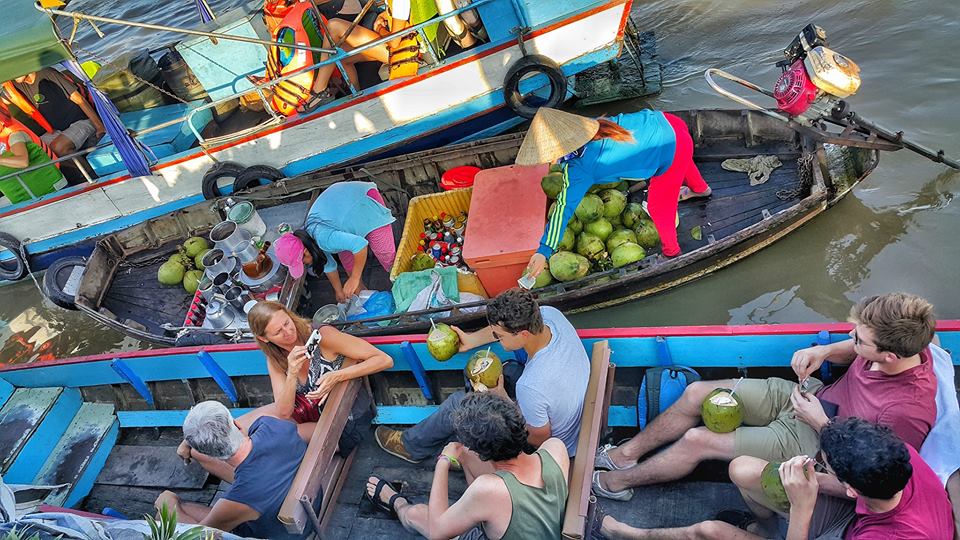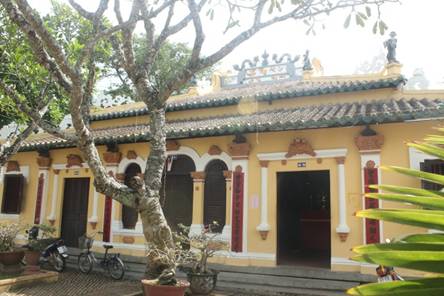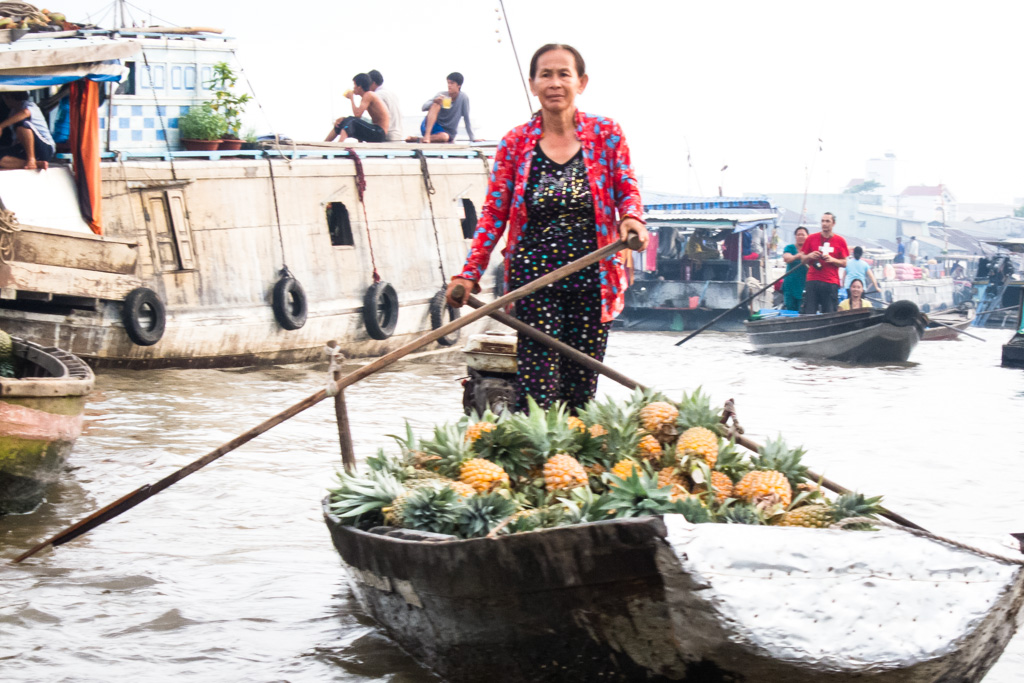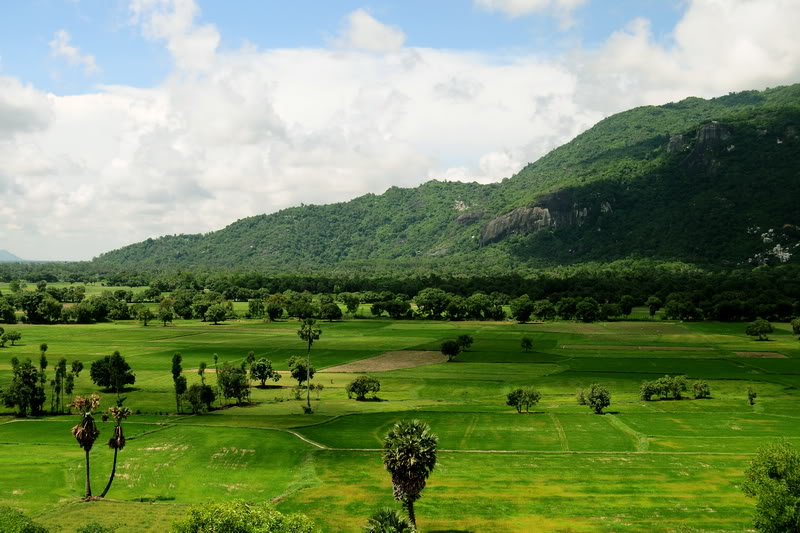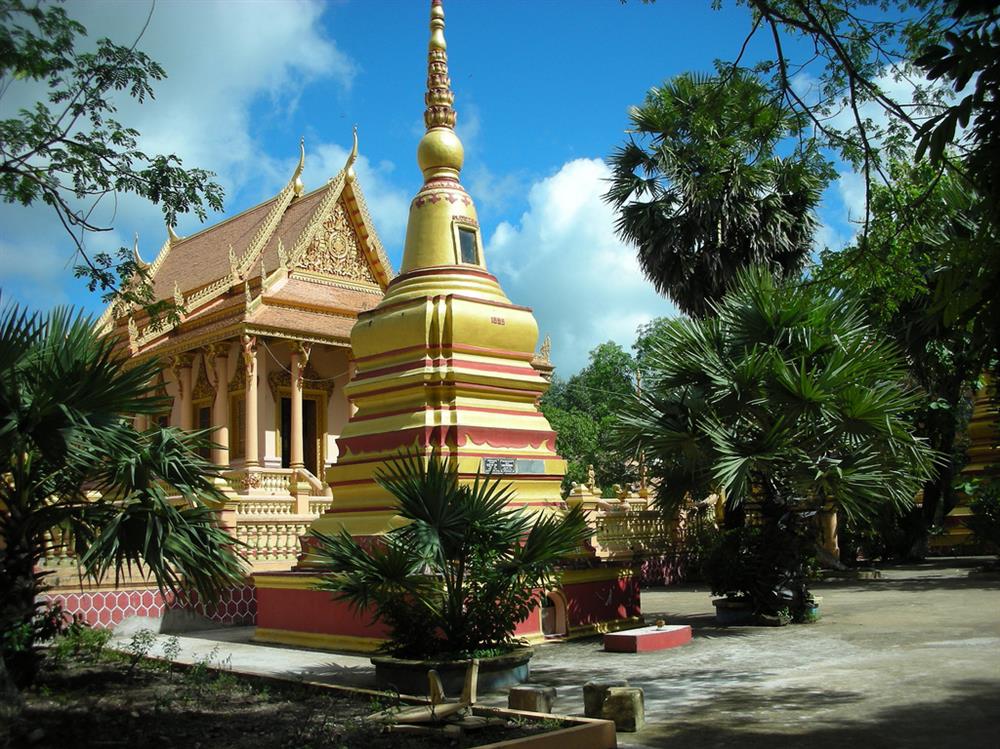The Mekong Delta is a network of tributaries in southwest Vietnam, between Ho Chi Minh City and Cambodia. The river itself starts in the Himalayas and passes through China, Myanmar, Thailand and Cambodia before reaching Vietnam, which partly explains why the waters are so murky.
More than half of Vietnam’s rice and fish comes from the delta region, so you can see how vital it is to the Vietnamese economy and diet. Life in the area revolves around water, from the famous floating markets to the vast agricultural industries; a variety of fruits, flowers and livestock grow in the region.
The Mekong Delta is recognized as one of the most culturally diverse regions in Vietnam as it comprises four main ethnic groups spreading across the whole region. Besides the Kinh Vietnamese majority, the three other ethnic minority groups are the Khmer, Chinese and Cham.
1. Ba Chua Xu (Temple of the Lady of the Realm)
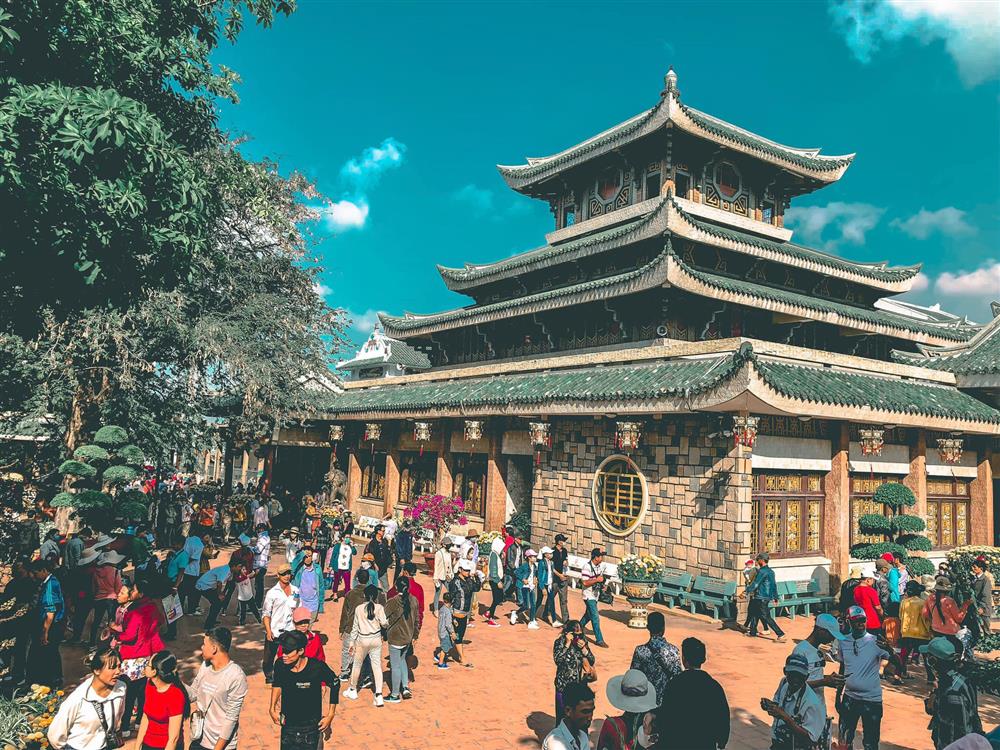
The temple was constructed in 1820 as according to folklore, in the early 1800s, local people there had found a female statue made of marble in the forest—they considered her as their ‘country lady’, Ba Chua Xu. They built the temple to worship the lady with the hope that she would bring them greater crops as well as happier and wealthier lives.
At first the temple was made of bamboo. In 1962, it was roofed with double tiles. Then in 1972, it was rebuilt (except the 10m-long stone wall at the back, which was the old platform of the tower). The monument was completed in 1976.
2. Cai Rang Floating Market
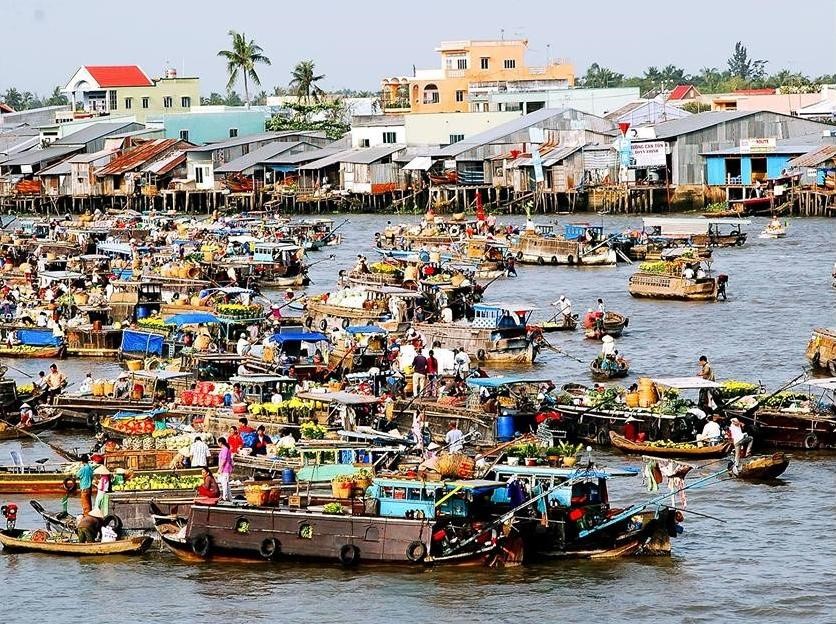
Cai Rang floating market is located on Cai Rang river, Cai Rang district. It is about 5 km away from the center of Can Tho city and about 15 minutes away from Ninh Kieu quay by motorbike and 30 minutes away by boat.
The market is about 500m away from Cai Rang Bridge, following Vo Tanh road to Ba Lang canal towards Phong Dien district.
Cai Rang floating market is famous for its unique and interesting elements. Here, the simplicity and genuine beauty of the floating market remain intact from time to time even though the trade activities are always bustling daily with customers from everywhere. In 2016, Cai Rang floating market was recognized as a national intangible cultural heritage.
Cai Rang Floating Market is one of the most interesting tourist attractions in Can Tho city. It is also selected as one of the five most beautiful floating markets in Asia by Youramazingplaces, a tourism site.
The best time to visit the floating market is from 5am to 8am because this is the most bustling and busiest moment of the market. Early in the morning, hundreds of boats gather to buy and sell goods in crowds. The most distinctive feature of the floating market is probably the bamboo pole called “Cây Bẹo”, a unique way to advertise goods. “Cây Bẹo” is a bamboo with a length of 3m - 5m hanging all kinds of goods to invite buyers. A forest of “Cây Bẹo”, hanging all kinds of agricultural products, vibrating under the undulating waves of boats, is an interesting scene, leaving an unforgettable impression to every visitor.
3. Vinh Trang Pagoda
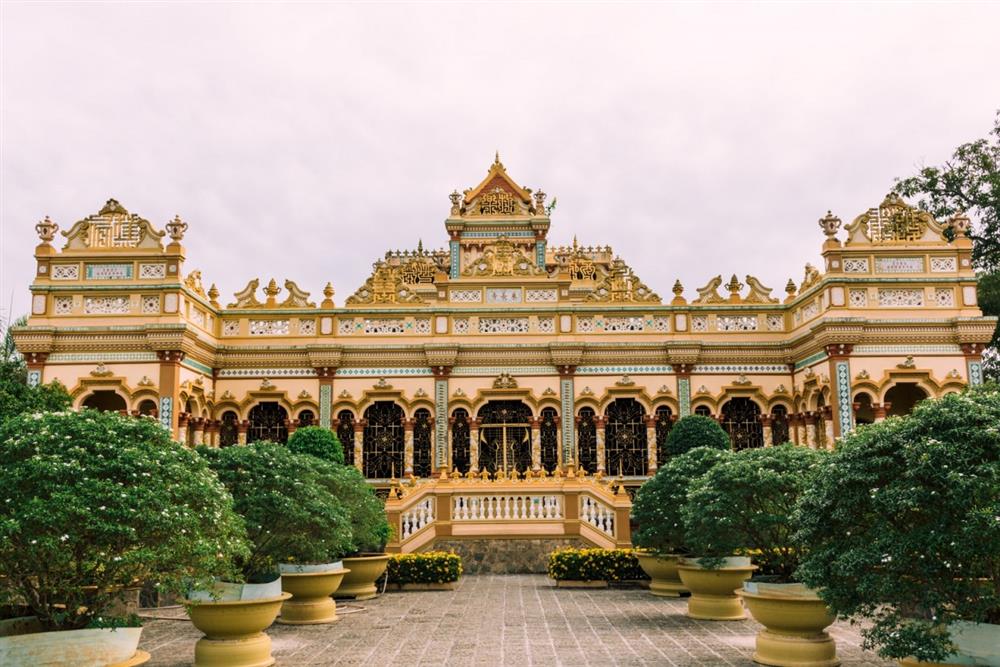
At the heart of Vietnam’s Mekong Delta lies a gorgeous, sprawling pagoda not to be missed by visitors to this region.
Vinh Trang pagoda is one of the most well-known in the Delta and located approximately three kilometers from the center of My Tho city. Feast your eyes on this exquisite temple and surrounding ornate gardens.
The sprawling pagoda rests on two acres of beautifully manicured gardens and fruit-bearing trees. The idea for the temple belonged to district chief Bui Conh Dat in the early 19th century. After Bùi passed away, Buddhist abbot Thích Huệ Đăng presided over the rest of the temple’s construction and was the one to name it Vinh Trang. The temple was completed in 1850, but just a decade later it suffered heavy damage as French colonial forces battled the Nguyen Dynasty’s army for control of what is now southern Vietnam. Reconstruction efforts were successful, however the temple later fell into disuse.
In the late 1890s, the temple was completely renovated under the eye of new abbot Thích Chánh Hậu, only it to be heavily damaged by a powerful tropical storm. Another extensive rebuilding campaign began in 1907 under the same abbot. After his death in 1923, his successor Thích Minh Đàn organized several more renovations of the complex and oversaw the construction of the ceremonial hall and the main triple gate.
Vinh Hoang pagoda features three enormous Buddha statues. The standing Buddha represents Amitabha Buddha, who symbolizes ultimate bliss and compassion. The Laughing Buddha symbolizes happiness and good luck and has become a deity for good fortune around the world. The reclining Buddha represents Gautama Buddha before he enters parinirvana, the death of one who has attained nirvana during his lifetime and has been released from the painful cycle of samsara, or rebirth.
4. Xiem Can Temple
Xiem Can Temple in the Mekong Delta province of Bac Lieu is listed among the most magnificent large-scale Khmer temples in southern Vietnam.
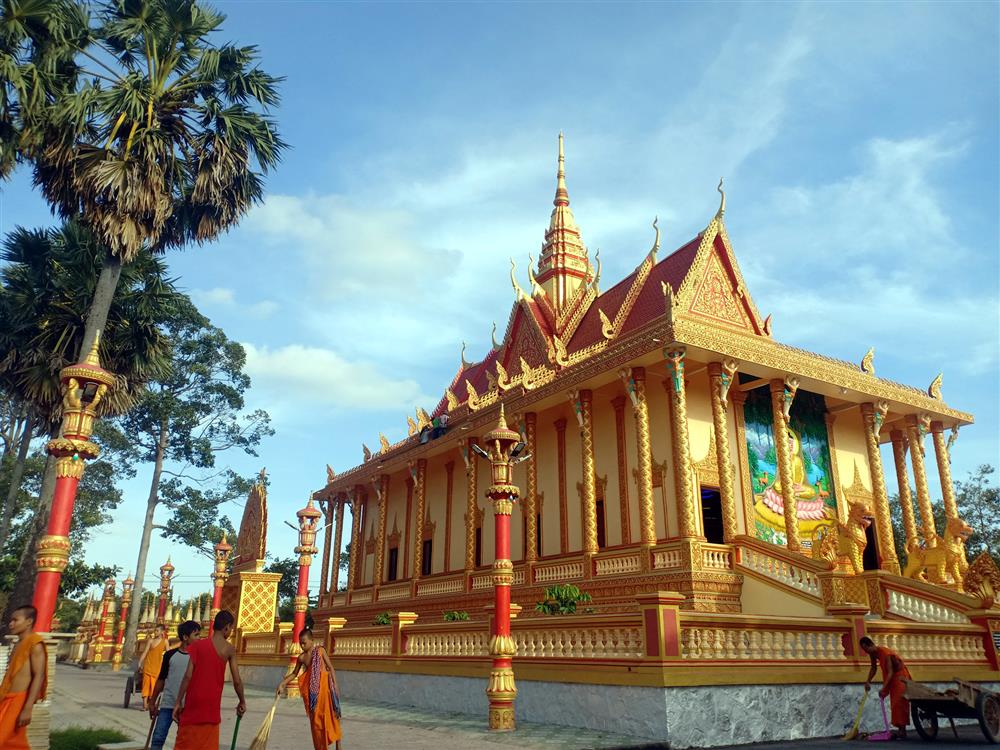
The Buddhism has two major schools including Mahayana, which is commonly practised in the Sinosphere comprising of Vietnam, China, Japan, Korea, Mongolia, and Theravada, which is more popular in Southern Asian nations on which the Indian culture has clear influences consisting of Sri Lanka, Thailand, Cambodia, Laos, Myanmar. The Khmer people in Vietnam practice Theravada Buddhism rather than Mahayana Buddhism like their Kinh fellows. They have also erected some of the most architecturally special temples in Vietnam, including Xiem Can temple in Bac Lieu province. This temple was constructed in 1887 and is up to 4ha in size. Not only is this temple a communal place for worship and education, it is also a museum with hundreds of century-old Buddha statues and an ancient 70-page Khmer book made from leaves.
5. Vam Ray Temple
Vam Ray Temple is the largest Khmer temple in Vietnam, located in Vam Ray Hamlet, Ham Tan commune, Tra Cu district.
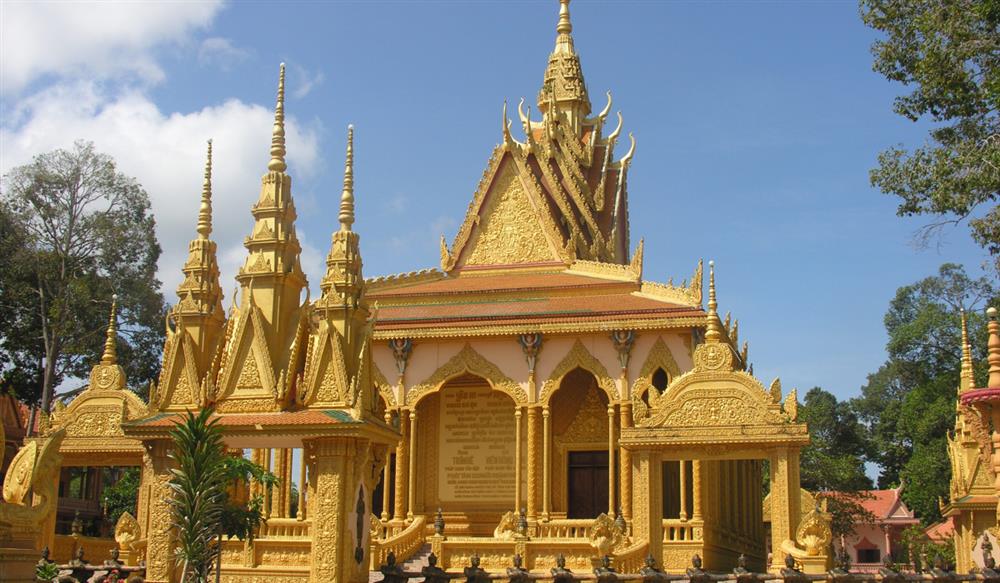
Although it is newly inaugurated, the temple has contributed to the new look of cultural tourism of Tra Vinh and the system of Khmer temples in Southern region. Here, you will be overwhelmed by the splendid temple of Khmer culture.
Apparently, Vam Ray Temple is splendid as a golden palace with meticulously carved patterns. Everywhere you will see the color of gold from the dome to walls, pillars, bas-reliefs and statues of gods. In addition to the architecture, Vam Ray Temple impresses tourists with its 54m long statue featuring the Buddha Enter Nirvana.
If you go to the temple in the right time, you will also have the opportunity to participate in cultural festivals of the Khmer such as the Chol Chnam Thmay (New Year), Dolta (worshiping the ancestors), Ok Om Bok (worshiping the moon), cotton and water offering festivals.
Vam ray pagoda is in a rather convenient traffic position. To come to Vam Ray Pagoda, you can go in different ways like going to from Tra Vinh, Can Tho City, Ben Tre or Soc Trang. Visiting an ancient, Angkor architectural style having and the biggest in Vietnam Khmer pagoda is an interesting thing. You will not regret when decides to come to this special place.
6. Khmer Cultural Museum
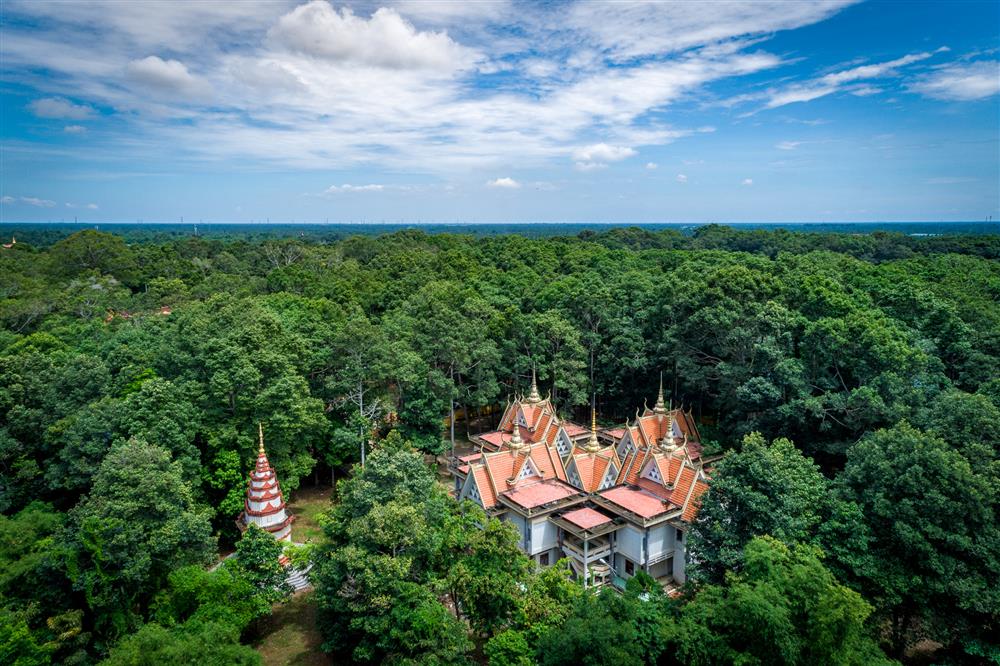
Tra Vinh is known as a green city with green old trees, the nice Ba Om Pond, Cau Ke Makapuno Fruit (Dừa sáp), Tra Cuong Cylindrical sticky rice cake, and many others. It is a big miss if visitors do not visit Khmer Cultural Museum in Tra Vinh. There we can learn more about the culture of Khmer people in the city, the unique architecture in Khmer style, and simply relax under the shade of tall and big trees.
Tra Vinh Khmer Museum is located in Ward 8, Tra Vinh City, Tra Vinh Province. It is 5 km southwest of the city’s center. It is located next to Ao Ba Om and Ang Pagoda. The three attractions have become must-see places in Tra Vinh.
Tra Vinh Khmer Museum is housed in a 2-story building that has a total floor area of 1,700 m2. The garden is 10,000 m2 and full of green old trees.
The museum houses more than 800 objects, documents, photos, reflecting the culture, lifestyle, habits, and customs of Khmer people in Tra Vinh in the past and the recent.
7. Thean Hou Temple
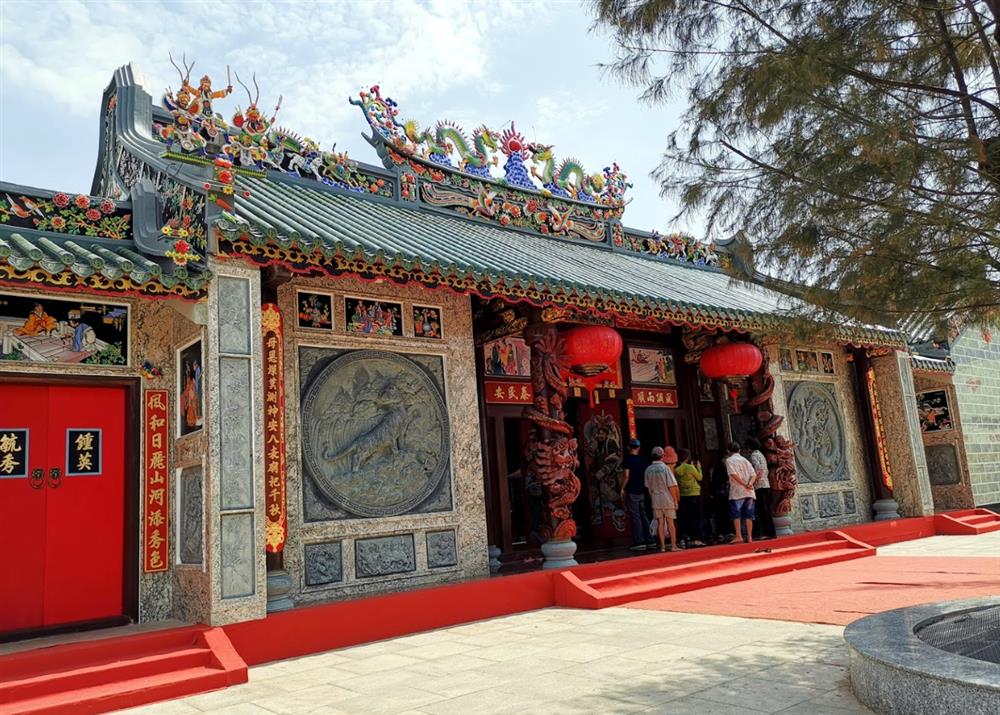
Constructed in 1891 by the Teochew settlers in Soc Trang province, this Thean Hou temple is one of the earliest temples in the Mekong Delta. The temple is dedicated to Fujianese Mazu Goddess, who is believed to be the tutelary deity of seafarers and is worshipped by Taiwanese and Chinese communities living across Southeast Asian countries, especially Singapore, Vietnam and Malaysia as large numbers of the Chinese living in these countries are Hokkien. Her temple festival, which attracts not only the Chinese but also the Vietnamese, falls on 23rd of March in the lunar year.
8. Cham Commune
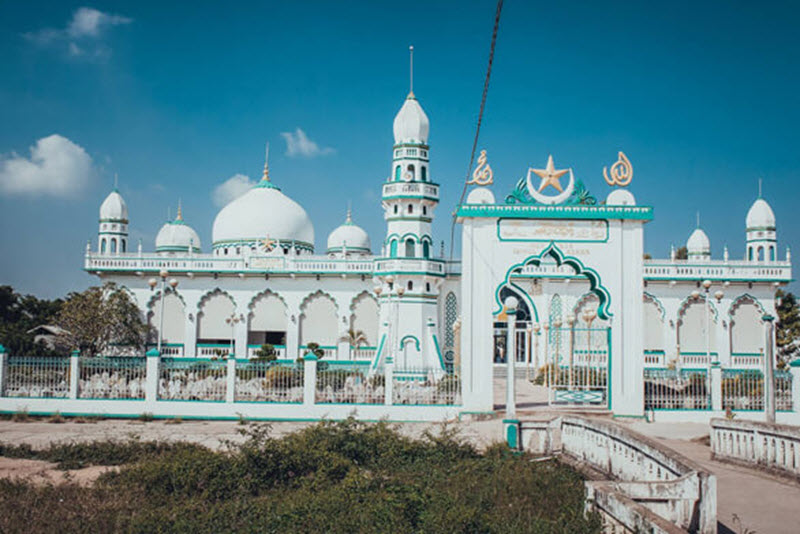
Last but not least, the Cham community also plays an important role in the Mekong Delta’s cultural diversity. The Cham residing in this region mainly practice Islam and cluster together in one region. Da Phuoc, a Cham-majority commune, is emerging as a main tourist destination in An Giang thanks to the special cultural practices, lifestyles, and architecturally special stilt houses of the Muslim Cham. Don’t forget to drop by the Mubarak mosque and the traditional craft village when you happen to be around the area.










